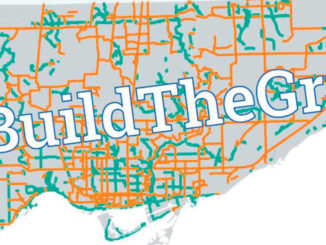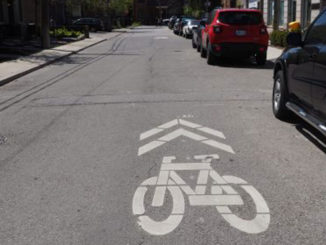
When we moved to Leaside in 1988 a big draw was that the schools were within walking distance of our home. From Grade 1 through high school, our kids could get themselves to school, fostering a sense of responsibility and independence. But that was 30 years ago, before smartphones, ear-buds and distracted driving. Parents today are rightly concerned about safe travel to school. Thanks to active transportation programs at local schools, many kids walk and bike to school and more are being encouraged to do so.
Benefits for kids and the community
According to the City of Toronto, just 7% of 5 to 11-year-olds meet the 24-hour Movement Guidelines for Children and Youth. Walking or biking to school is an easy way to embed physical activity in a child’s day – a 1 km walk means more than 2,200 steps. Active transportation also reduces traffic congestion and air pollution around school zones. Plus, there is some evidence that physical activity early in the day improves concentration at school.
Local schools on board
Both the TDSB and TCDSB have policies and programs to promote active transportation. Northlea Elementary and Middle School and St. Anselm Catholic School are among local schools taking advantage of available programs to get more kids walking and biking to school. As both principals at the schools stressed – safety is paramount.
St. Anselm principal Donato Di Paolo noted, “Worries about increased traffic, construction, speed and aggressive driving are barriers to kids walking and cycling to school.” St. Anselm is initiating a Traffic Management Study to assess what can be done to mitigate congestion at the school and enhance safety. At Northlea, the parent-run Kiss-n-Ride has been key to reducing congestion around the school.
Education and reinforcement required
Barbara Sandler, principal at Northlea, sees active transportation as part of a larger goal of promoting student engagement in the community in ways that are safe. “This is not a one assembly issue; we revisit, review and remind students of safety strategies throughout the year.” Northlea Phys. Ed. teacher Ashley Zaharia explains that moving safely is embedded in the physical education curriculum, beginning with road safety during the first week of school. At St. Anselm, two students from the Nursing program at Ryerson University will be developing and delivering units on street safety applicable to all students.
Strategies for parents
Walking or cycling to school with children on a designated day each week is a great way to get started and reinforce safe travel practices. If mornings are too busy, parking a block from the school and walking the rest of the way can work. Parents can take the lead and start a Walking School Bus to share walking duties with other parents and talk to the school about running programs on International Walk to School Day, Walking, Wheeling Wednesdays with Toronto Public Health, and Bike to School Week in the last week of May. Discover more active travel ideas at ontarioactiveschooltravel.ca.
Holly Reid is a recreational rider and cycling commuter who has lived and worked in Leaside for 30 years.





